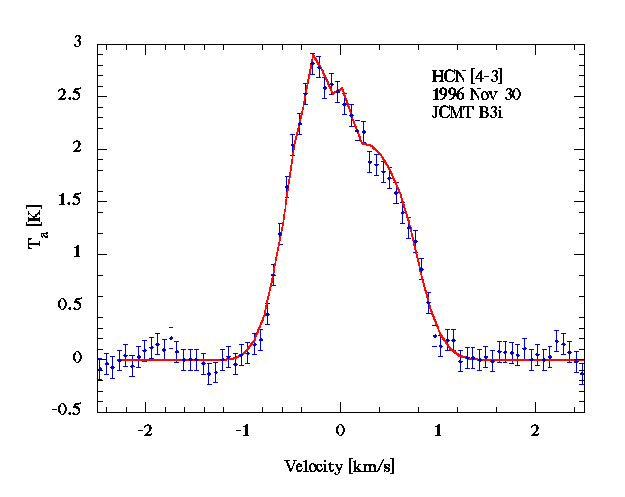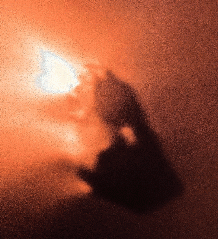
The HCN rotational spectral line in Hale-Bopp from observations at the JCMT
Spectral Lines
Cometary spectroscopy is unusually simple in that most gas lines are
optically thin (transparent) most of the time. (A notable exception was
provided by Hale-Bopp in which the amount of gas was so huge that some
of the lines became optically thick (opaque) near perihelion. But in
general, optically thin conditions prevail). This means that every atom
and molecule is exposed to the full intensity of sunlight and is
visible to the earth-bound observer. The mechanism of
excitation depends on the
wavelength of the photon.
The spectrum line profile results from the Doppler effect and the
motions of gas atoms and molecules in the comet. In a spherical,
isotropic coma, the line profile would be symmetric, since equal
numbers of atoms approach towards and recede from the observer. In
comets we more usually see asymmetric line profiles, which indicate
asymmetric outgassing. The outgassing is directed towards the sun
because the nucleus day-side is hotter than the night side.
The thermal and expansion motions of gas in the cometary coma are
both of order 1 km/sec. High spectral resolution is needed to study
spectral line profiles, and this is best attained by
submillimeter
spectroscopy using telescopes like the (sometimes) fabulous
JCMT.
Last updated December 1997 by David Jewitt

